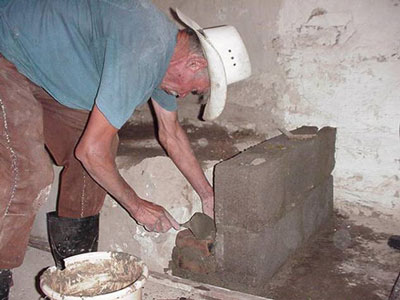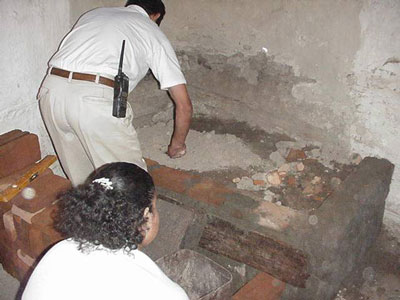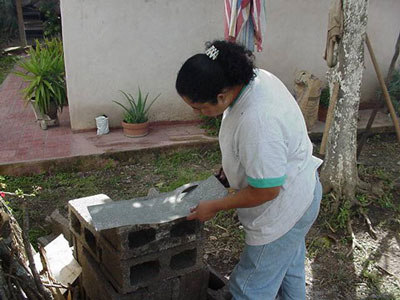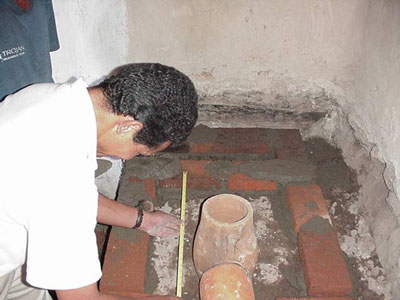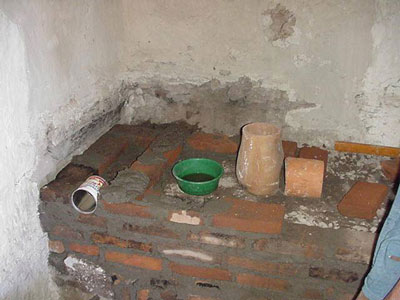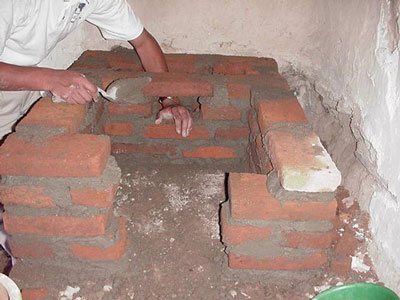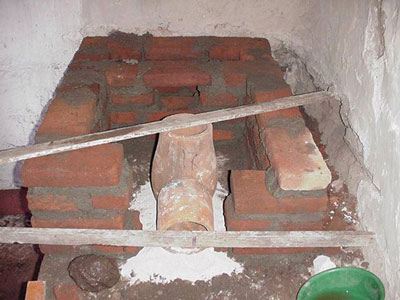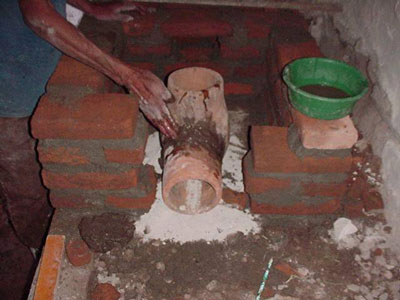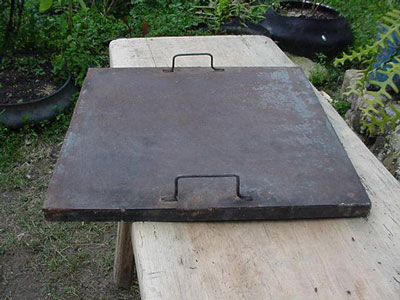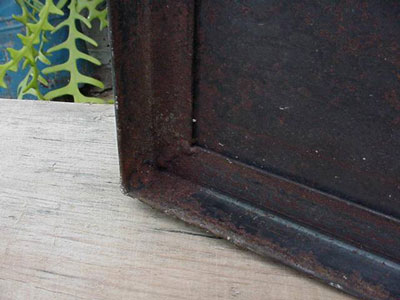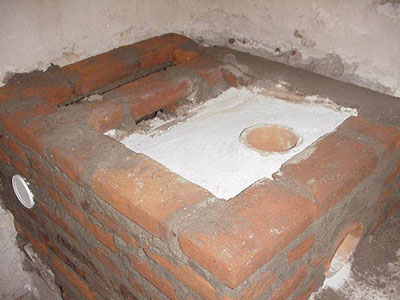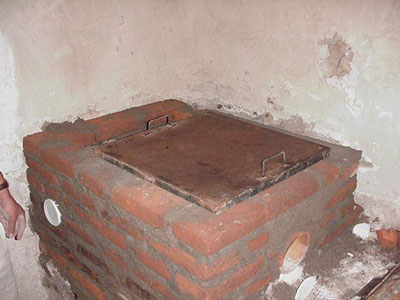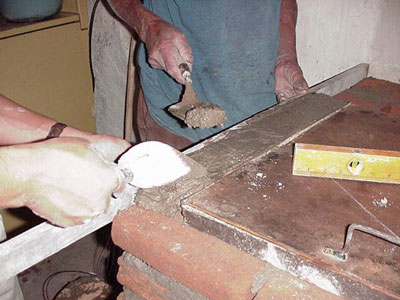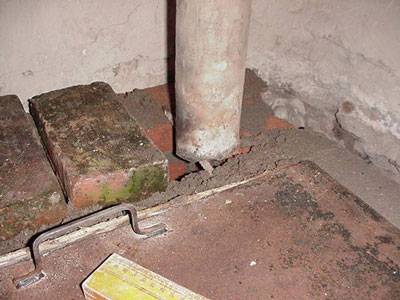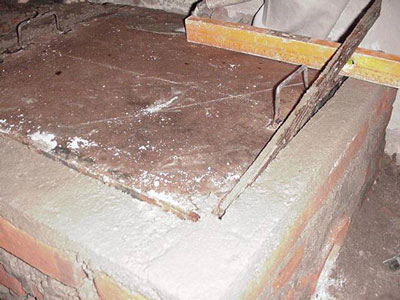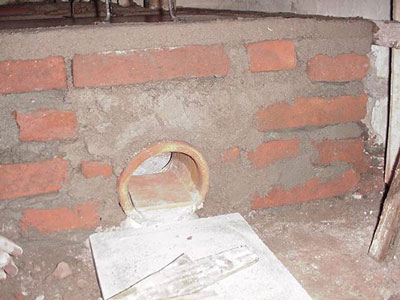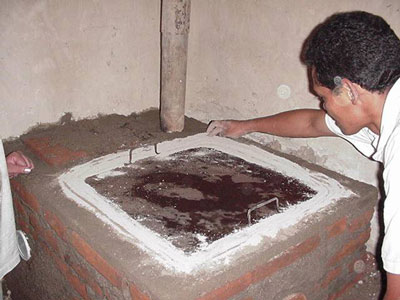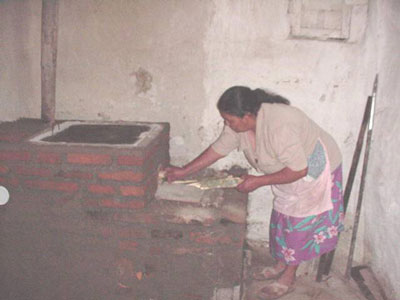Construcción de la Estufa Justa (English and Spanish)
Jim Wilmes, Una-Familia, Trees Water and People
Step By Step Instructions for building a Justa stove by Jim Wilmes, Unafamilia, volunteer for Aprovicho and Trees Water and People
Jim Wilmes, Volunteer for Aprovecho Research Center and Trees Water People
The Justa stove, named for Doña Justa Nuñez of Suyapa, Honduras who helped to design it, is one of many varieties of stoves that use a technology called the "rocket elbow" invented by Dr. Larry Winiarski. The category of stoves is often referred to as "rocket stoves". They are simple biomass stoves built around an insulated, elbow-shaped combustion chamber which provides more intense heat and cleaner combustion than an open fire, while consuming less fuel. In the Justa stove the elbow is formed from two ceramic cylinders made of a mixture of clay, manure and tree resin. Ashes or pumice are usually used for insulation.
The Justa stove has a sealed metal plancha that sits above a stove made of bricks, and a chimney that carries the smoke outside. Other models of rocket stoves may have holes in the plancha. Below the chimney there is a channel that catches the soot that falls down when the chimney is cleaned, so that it can be removed from the stove. One can cook tortillas directly on the metal surface, and cook other foods in metal or enamel pots. The stove is generally built on some type of base that serves as a place to temporarily store firewood or food items that are being prepared. A simple base can be made from concrete blocks and filled with earth. The following pictures show the process that is used in Suyapa, Honduras by the Honduran Development Association (AHDESA) to build the stove. Although most of the people building the demonstration stove in these pictures are men, it is generally the women of the community who build the stoves in Suyapa.
| 1: Preparing the Base - Preparando la base | 2: Filling the base - Llenando la base |
|
|
|
| 3: Cutting sheet metal to make a channel for the soot. - Cortando la lamina para hacer una canaleta para el hollín. | 4: Measuring the area for the plancha - Midiendo el área para la plancha |
|
|
|
| 5: The base with the first layer of bricks added - La base con la primera carrera de ladrillos | 6: A space in the third row of bricks for the smoke to escape to the chimney. - Un espacio en la tercera línea para que el humo escape hacia la chiminea |
|
|
|
| 7: Putting the ceramic elbow on a mound of ashes, at the same height as the top row of bricks. - Poniendo el codo encima de la ceniza, a la misma altura de la ultima carrera de ladrillos. | 8: Sealing the elbow with mud - Sellando el codo con lodo |
|
|
|
| 9: A cooking surface of 22 by 22 inches - Una plancha de 22 por 22 pulgadas | 10: The bottom of the cooking surface has angle iron welded to it and sealed. - El fondo de la plancha se hace de angulo cuadrado, sellado y con soldadura |
|
|
|
| 11: The brick box is filled with ashes. - La caja se llena con ceniza. | 12: The cooking surface centered over the bricks. - La plancha centrada sobre la caja de ladrillo. |
|
|
|
| 13: Filling the border of the cooking surface with cement (a wooden spacer prevents it from sticking to the metal). - Rellenando el borde de la plancha (la regla evita que la plancha se pegue y provee espacio para sacarla) | 14: Placing the chimney over a piece of reinforcing rod. - Poniendo la chiminea sobre un pedazo de varilla como refuerzo. |
|
|
|
| 15: Removing the wooden spacers. - Removiendo las reglas. | 16: The ceramic tube where firewood is fed into the stove, with a plate to allow air to pass under it. - La entrada para poner la leña, con la planchita para asegurar que haya suficiente aire en el fuego. |
|
|
|
| 17: Filling the gap around the stove top with ashes. - Llenando el espacio alrededor de la plancha con ceniza. | 18: Making a final test of the stove. - Haciendo una prueba de la estufa. |
|
|
|

|
 |
| Trees Water People www.treeswaterpeople.org |
Aprovecho Research Center www.aprovecho.net |

